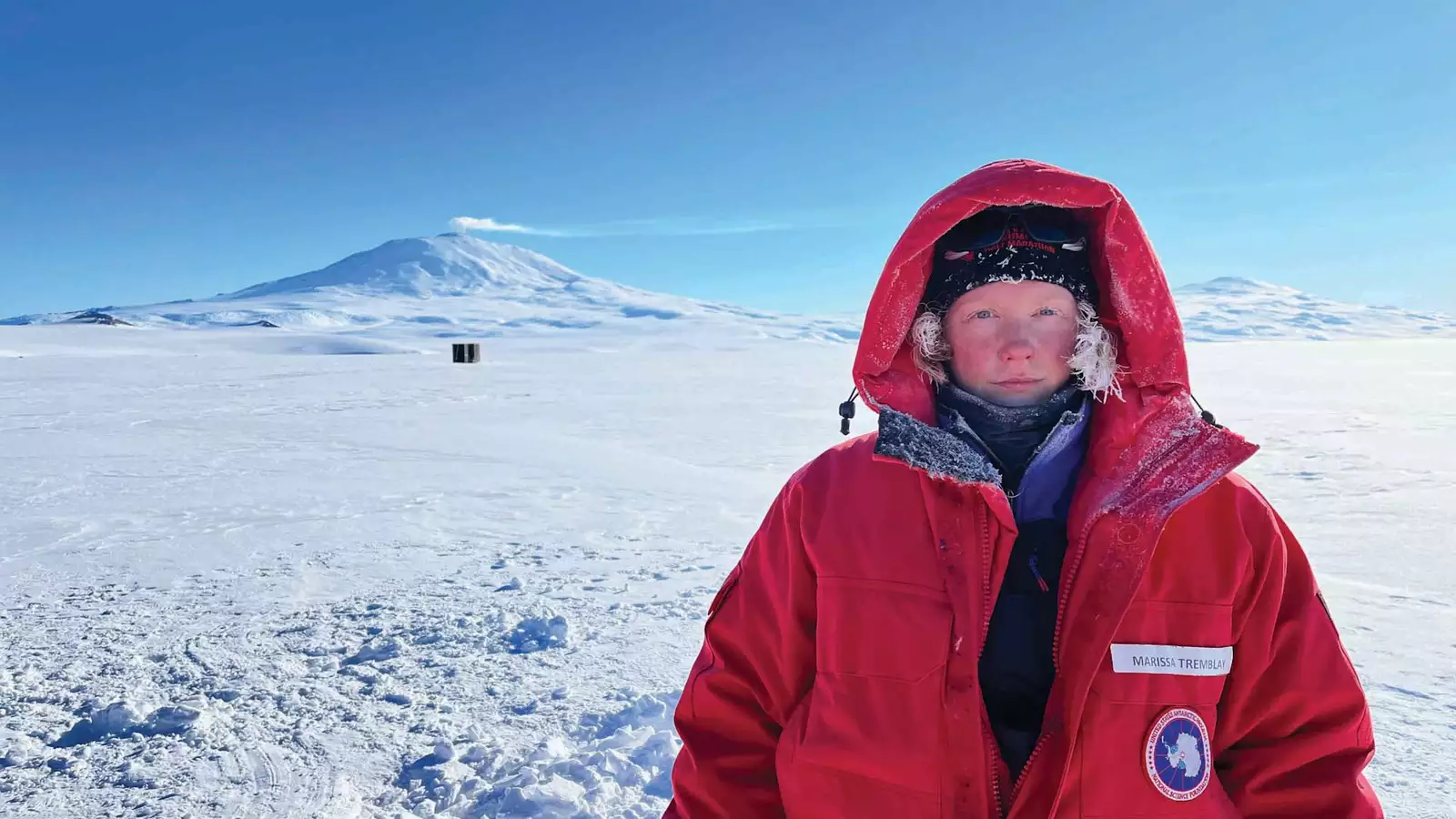
The Oscar-nominated actress says science informs her art and vice versa

A geologic field excursion to Death Valley during spring break her first year at Barnard set Marissa Tremblay ’12 on course to becoming a scientist. She entered college intending to pursue a law degree, but stepping foot on that vast, desolate desert landscape marked with sand dunes ignited a curiosity to uncover the stories in stones.
“I ended up falling in love with geology on that trip,” says Tremblay. “I’d never been to a desert environment with basically no vegetation. You could see lots and lots of rocks for miles and miles, and I was captivated thinking about how to go about interpreting what you see in terms of the history of that place over lengthy timescales.”
Nicholas Christie-Blick, professor of earth and environmental sciences at Columbia, led the trip. Tremblay recalls being the only student who was awake, peppering the professor with questions, as the group drove around in the van. Christie-Blick became a mentor of Tremblay’s as she focused her studies in environmental science.
That summer, she interned at the Lamont-Doherty Earth Observatory under Sidney Hemming, a geochemist and professor of earth and environmental sciences.
“Having Sidney Hemming as a role model early on was hugely influential in helping me figure out what I wanted to do and the path I would take,” Tremblay says. “She’s one of the few women senior scientists working in our field. It wasn’t always obvious that I would set up a similar lab to hers, but I’m pretty happy I ended up following in her footsteps.”
Now an assistant professor of earth, atmospheric, and planetary sciences at Purdue University in West Lafayette, Indiana, Tremblay studies rock samples to measure the temperature history of continental surfaces. She uses a novel method she developed during her Ph.D. research at University of California, Berkeley, which measures historic temperatures using noble gases trapped in minerals. With this technique, scientists can determine how warm the planet was during a certain period of history.
Most of her research projects could stretch back only a few tens of thousands of years — until now.
Last fall, in search of rocks that could tell a story from millions of years ago, Tremblay led an all-women scientific team on a six-week expedition to Antarctica to collect samples from the McMurdo Dry Valleys — a place nearly untouched by time.
The McMurdo Dry Valleys are remote, even for Antarctica. To reach some of the field sites, it’s a one-hour flight via helicopter from McMurdo Station — the continent’s largest research facility, which is funded and operated by the National Science Foundation. The team camped for about a week in the western Olympus Range to allow for more time collecting samples and installing instruments. The rock samples were shipped to Purdue in a cold-storage vessel, arriving in May — six months after the team departed Antarctica.
Weather in the valleys can be bitterly cold, averaging between 5 degrees and minus 22 degrees Fahrenheit. And while Antarctica’s frigid temperatures boggle the mind, it’s global temperatures that shock as they continue to rise — 2022 was one of the hottest years on record.
Understanding how climate change will affect the polar regions in the future can influence policy changes implemented today. How warm was Antarctica when the ice sheets last melted? How many degrees would it take for the oceans to rise to catastrophic levels? By studying the stones, Tremblay hopes to find out.
The two enormous ice sheets that blanket much of Antarctica contain about 70% of all the freshwater on Earth. They are vulnerable to ongoing climate change; a significant increase in temperature could cause them to melt, contributing to a substantial rise in sea levels. But how fast and how soon that might occur has been difficult to determine.
To help answer questions about the effects of a warming planet on Antarctica’s ice sheets, Tremblay sought to examine the geologic record during the mid-Pliocene Warm Period, about 3 to 3.3 million years ago, when sea levels were about 50 feet higher — the height of a five-story building.
“This period in time is of particular interest because it’s the last time carbon dioxide concentrations in the atmosphere were similar to today’s,” Tremblay says. “It’s a good analog for understanding where our planet is heading in the next few centuries.”
In other parts of the world, things at the surface erode much faster. But in the McMurdo Dry Valleys, the processes acting on the landscape are so slow that these rocks are just sitting there, bearing witness to the changing climate.
Antarctic ice core records date back only 800,000 years, and historic ocean records don’t necessarily tell us how warm temperatures were on land. But the rocks in the McMurdo Dry Valleys — which is one of the driest and most remote places on Earth and not covered by ice sheets — have been sitting at the surface eroding at unfathomably slow rates for millions of years. They also contain the noble gases Tremblay uses to study past temperatures. The team identified six sites across the valleys to collect rock samples and set up weather stations to measure present-day temperatures.
“Developing a deeper understanding in general of the climate system is helping us make better predictions for what’s going to happen in the future,” Tremblay says. “In many ways, our research on the past climate of Antarctica is only just beginning. It will take many months to years studying their chemistry to unlock their climate secrets.”